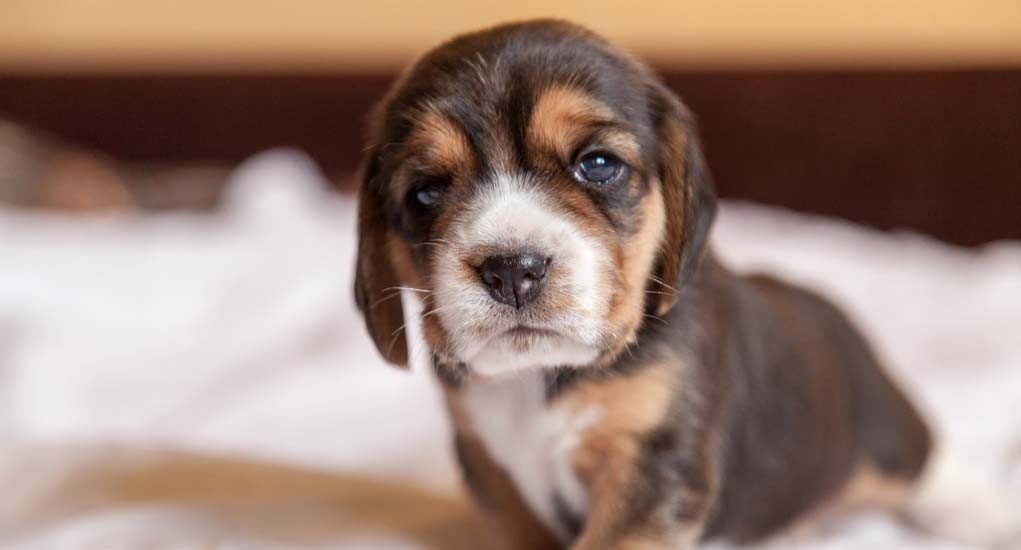Bringing a new puppy home can be an exciting and fun adventure. Those adorable creatures we call puppies bring so much joy to a family, but what they can also bring is chaos if the owner hasn't gone through some type of a puppy training 101 manual.
This is especially true about dogs who later grow up to be very nasty to their owners. Pet owners should be concerned about adopting a dog who hasn't been trained, and creating a check box of “Puppy Training 101” on their to do list is necessary. In fact, it wouldn't be the worst idea to enroll your young dog in a puppy obedience class from one of the training schools where he or she can start learning the basics. This type of fundamental puppy obedience training gives them an opportunity to start their socialization process, which is one of the key components of training a puppy.
The best and most successful type of approach to puppy training 101 that yields a healthy relationship with the dog is positive reinforcement training. This type of guidance moves away from the harsher punishment-based methods that just instill fear and in fact do not work that well, which has been proven by multiple studies on the matter.
Below are some of the most basic puppy training 101 tips that should be worked on right away for your puppy to grow into a well-mannered dog and ensure a happy family environment. But note that these are just some very basic guidelines, and for the best results, you should do a more thorough research on a step by step type of training for your dog. Better yet, consult with a professional, and if you can afford it – enroll your dog into a obedience training class.
Puppy Training 101: Basic Walkthrough of Young Dog's Obedience Training
Housebreaking puppies
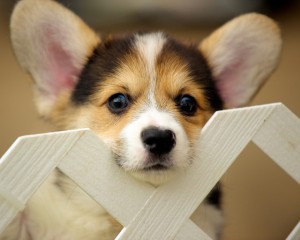
We have previously talked extensively about housebreaking puppies and covered a lot of ground in terms of toilet training puppies. Basically, your primary focus must be to develop a bathroom routine right away for your new dog, and try to have it in the same spot all the time.
The goal is to move that spot from inside of your home to outside as soon as that's doable.
The routine is very simple to understand and follow for you and your dog.
Every time your puppy successfully uses his “bathroom” spot, have a small treat ready to give him to reward his “appropriate” behavior. This is essentially how positive reinforcement works in puppy training 101, be in housebreaking or anything else.
RELATED: 21 must know dog training tips
When your pooch has done it right, remember to verbalize clearly some positive command, such as “Yes!” or “Good boy!” to show that you are happy with his behavior. Give him plenty of attention, pet and praise so that he starts to incorporate positive connection with peeing in the right spot.
Once this has been accomplished, move the peeing spot outside and repeat the technique.
Young puppies need to constantly live in clean surroundings and should never be forced to stay in their own soiled crate, if that ever happens. The reason being is because he will lose his natural instincts to not soil in his dog crate if left in that kind of environment.
Also, try to never leave a young dog in his crate for too long. In case it happens that he has an accident while in the crate, this will not be his fault. Puppies have hectic bathroom routines, and those are difficult to predict. Your new pooch will need constant attention about his bathroom ventures in order to stay consistent and succeed at being housebroken, and for you to successfully accomplish your home puppy training 101 class.
Consistency is always the key. Involve everyone in the family to take part in housebreaking a puppy. Always use word prompts so your young canine starts making connections between the words and actions of going to use his bathroom.
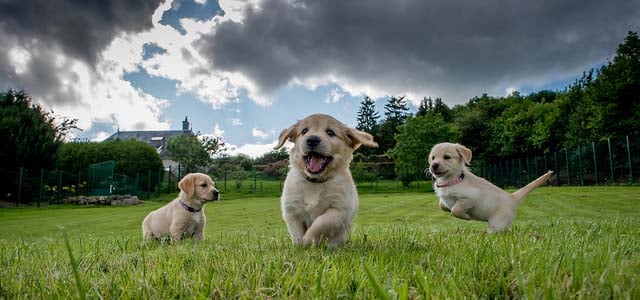
Redirecting puppy's jumping
You probably already know that young dogs are very active and lively. They want to smell you, lick you and jump on you. Regardless of how adorable this is in the beginning, jumping is actually one of the most common dog behavior problems and must be addressed as soon as possible.
The best ways to redirect jumping that has proven successful at first is to ignore your puppy when he jumps up on you. You can even turn your back to him as soon as he makes the move towards the jump, or has already jumped. Take your time with ignoring your dog after he has jumped, and let him understand that he's just done something he was not supposed to do.
RELATED: 11 tips for dog training basics
Make sure not to get frustrated with him or push him away as this will only increase your dog's excitement. Simply do not react.
After a few unsuccessful tries, you may want to incorporate commands into your puppy training 101 class on jump redirection. So when your dog starts jumping on you, use a firm verbal command or a sharp clap to discourage the jump. A quick but strict “No!” will do fine.
Once he is on all fours after you discouraged the jump, remember to positively reinforce him. Forgetting to reinforce positive behavior will confuse your dog, and will take your puppy obedience training much longer. Be consistent and make sure everyone in the family is involved in preventing this kind of behavior as well as positively reinforcing the pup. Do not allow anybody inside or outside of your home break this rule if you want to train your pooch quickly and effectively.
Introducing good chewing habits

Puppies love to chew. They will chew dog toys, dental chews and then move on to chewing your furniture, shoes, clothes, their own crates and dog beds, and anything in between. Active chewing is normal for dogs, and especially prevalent among puppies.
Puppies chew for many different reasons:
- to prevent boredom
- to keep themselves busy
- to ease sore gums
- to deal with teething
- when they are restless
- and even to help with separation anxiety
Do not discourage your puppy from chewing. Let him chew, but pick the right things.
Make sure that your pooch has easy access to things that he is allowed to chew on within his reach. If you fail to regularly monitor for your dog to have a puppy chew toy around, your dog will most likely begin chewing on things that are off limits to him. Remember, it's not his fault, and constant supervision can prevent this from happening. You didn't think that puppies are easy to train, did you?
RELATED: Must have dog supplies every owner should have
When you buy chew toys and bones for your dog, do not purchase too many of them, and especially in different kinds. Dogs are interesting creatures and their choices can sometimes be difficult to explain, but a good rule of thumb is that your pooch like some toys and hate others. Figure out first which ones your puppy loves to chew on and stock up on those specific dog toys. That way you'll have a new one ready to go once your pup has destroyed the old one. Too much of a selection can overwhelm your puppy as well.
Once again, a reminder to make sure that your whole family should be on board: familiarize them with the name of your puppy’s chew toys and/or actions of chewing. If any of you catch him chewing something he is not allowed, redirect him right away to his chew toys.
Keeping puppy away from begging opportunities
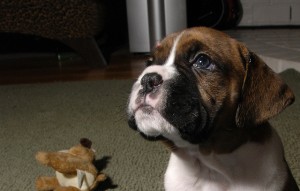
Possibly THE most common behavioral problem among dogs is begging, usually for food. Every owner knows a begging dog, but the problem is that it's too cute to fix. Nonetheless, this is a serious behavioral issue that must be corrected during your puppy training 101 home class. The earlier in your puppy's life you do so, the easier it will be on everybody in the family later on.
Why do dogs beg? Because they have no ego, thus they have no problem with the concept of begging.
Your dog begs because he knows that you are a food source for him. It is important not to start any bad habits of feeding your puppy at the table, unless you and your family have decided to be more open towards that sort of puppy behavior. Be careful though, because some dogs can get aggressive when they see you as a food source. ASPCA also has a good article on this type of dominant dog behavior.
When annoyed by YOUR behavior, some dogs can start to paw or even growl at you when they see you eating and not sharing, which is an act of dominant behavior. This can grow into a real problem later down the road when the dog is grown up (hopefully you don't own a Tibetan Mastiff).
To work on this behavior, start from the very beginning to deter your puppy from begging when you are eating food. Before you're getting ready to sit down to eat, find something to do for your dog. Maybe have him either on his bed or in his crate, or possibly keep him occupied with a chew toy (good luck with that!)
RELATED: 10 best vacuums for puppy hair
I can guarantee you that this will be the most difficult part of your puppy training 101 class, but the best thing you can do is to ignore your pet during meal times until he can be around the family who's eating without begging. Your dog will get the hang of it sooner or later. Puppies can be quick learners and stay consistent with their behavior if the training has been addressed properly.
Nonetheless, training a pup not to be is a challenge. Many dog owners give up and simply choose to ignore this problem, and then ignore the dog at the table. You can still do it though.
In addition, check for potential triggers. Make sure that all of your puppy’s needs are met before you and your family sit down to eat. He should have had his bathroom break, been fed, and had his required love and attention. There must also be something else for him to do other than sit down and stare you in the mouth.
Finally, if you really want to give your puppy something from your plate, wait until you are finished with your meal and have stood up from the table. Walk away from the table and preferably from the eating area before giving something to your dog so he does not attach an association with you eating and him receiving food.
Training puppies to behave around children
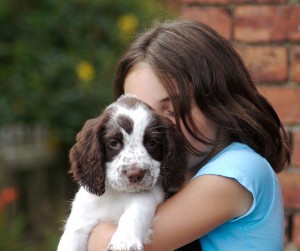
Last point I'd like to make is definitely not least, and in fact, is quite important for those who are bringing new dogs into the family and are ready to go through their home puppy training 101 class.
It is vitally important to get your puppy used to children the minute you bring him home.
Having your dog used to children (and vice versa) will ensure that you do not have any issues or concerns in the future, which can definitely arise. Every new dog owner must consider this, especially if you are planning to have children, already have children or have them visiting you often or your puppy meets a lot of them on daily walks. Kids are small, vulnerable and they are everywhere, so your dog must know how to behave around them.
RELATED: 35 best dog breeds for kids
Training your pooch to behave around children requires – you guess it – children! So if you do not have kids around and do not expect your pet to meet them often, you can skip this part of puppy training 101. However, if the opposite is true, make some effort: find a kid that you can borrow! Alternatively, get creative and maybe take your puppy to a park (when he's ready) to be introduced to other animals, people, kids and get him socialized.
Keep your dog on a tight leash, always be monitoring and do not – I repeat – do NOT let your dog play freely with kids at first once you are still getting to know him, and you're still in the process of training your young pooch. There are many things that can go wrong, and the last thing you want is your dog misunderstanding a child's behavior for something aggressive and reacting.
Always praise and positively reinforce your puppy when they are exhibiting good behavior around children.
A puppy’s critical age for socializing is between three weeks to five months, but the number varies (* there have been many new theories on what actually is the best age for socializing, some suggesting that it's much earlier). Either way, it's crucial to make sure that whatever your dog is introduced to makes him feel safe. Having children socialize with your puppy should be an enjoyable experience for both of them. It's alright to let them give him many treats during this time to teach him that he is in a safe situation around children.
Stick with your puppy training 101 class no matter what
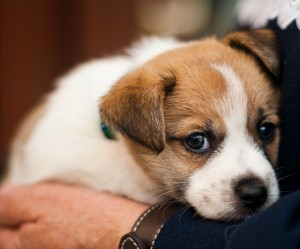
Do not give up on your puppy training 101 course after a few mishaps or failures. Nothing will go perfectly, and there will be some challenges down the road. Stick with it and you will be glad that you did.
Consistency and structure are what work best when training a young, inexperienced dog. Your puppy will learn fast with lots of positive reinforcement, love and attention. Your pup's sole purpose is to always please you, so he will constantly be eager to learn to make you proud. You will soon have that well-behaved dog that everyone will be raving about.
Most importantly, this process of training a puppy to be obedient – while occasionally frustrating – is for the most part extremely fun, enjoyable and rewarding!


